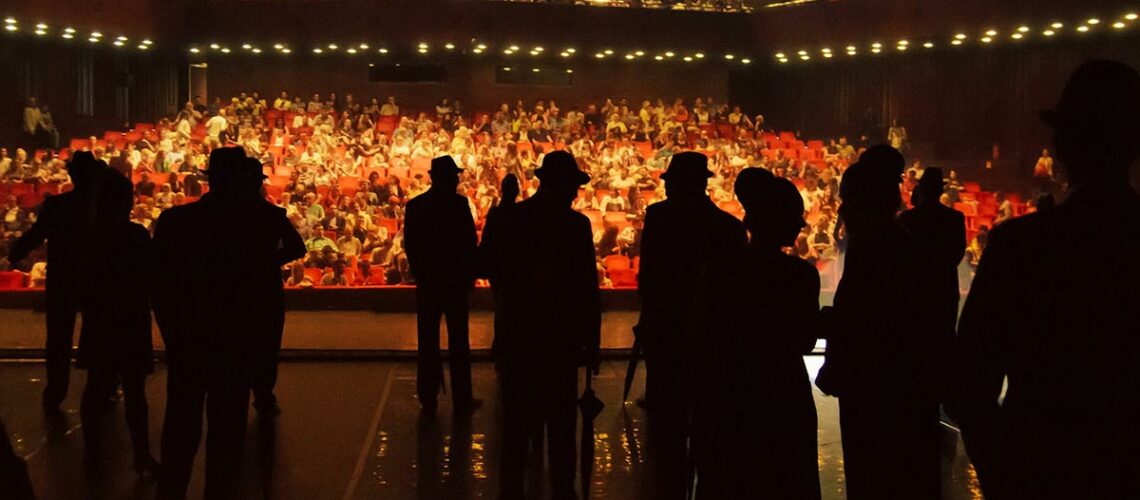Broadway, the legendary theater district in New York City, has been a haven for theatrical enthusiasts for decades. Over the years, it has produced a plethora of iconic musicals that have left an indelible mark on both the entertainment industry and popular culture. From the early 20th century to the present day, these musicals have not only captivated audiences but also shaped the way we perceive and experience theater. In this blog post, we’ll take a journey through the ages, exploring some of the most iconic Broadway musicals and their lasting effects on our artistic landscape.
The Roaring Twenties: “Show Boat” and the Birth of the Modern Musical
The 1920s witnessed a transformative period in Broadway history with the emergence of “Show Boat” in 1927. Often regarded as the first modern musical, “Show Boat” tackled serious themes such as racial prejudice and societal issues while seamlessly integrating music, dance, and storytelling. This innovative approach set a precedent for future musicals to explore deeper narratives while maintaining their entertaining appeal. Its impact was profound, paving the way for more socially conscious productions in the years to come.
The Golden Age: “Oklahoma!” and the Evolution of Choreography
The post-war era brought about the Golden Age of Broadway, a time characterized by spectacular musicals that embraced a blend of music, dance, and engaging stories. One such masterpiece was “Oklahoma!” (1943), a collaboration between composer Richard Rodgers and librettist Oscar Hammerstein II. This musical not only introduced a new level of integration between songs and plot but also revolutionized choreography. Agnes de Mille’s dream ballet sequence in “Oklahoma!” marked a turning point, emphasizing that dance could convey emotions and advance the narrative, forever altering the role of choreography in musical theater.
The Swinging Sixties: “West Side Story” and Addressing Social Issues
The 1960s witnessed a cultural revolution, and Broadway was not exempt from reflecting the changing times. “West Side Story” (1957), a modern retelling of Shakespeare’s “Romeo and Juliet,” pushed the boundaries of storytelling by addressing pressing social issues such as gang violence and racial tensions. Composer Leonard Bernstein, lyricist Stephen Sondheim, and choreographer Jerome Robbins created a seamless fusion of music, lyrics, and dance that remains a hallmark of this era. The musical’s daring themes and innovative presentation set a precedent for using the stage as a platform for discussing important societal matters.
The 80’s Enigma: “The Phantom of the Opera”
The Phantom of the Opera, composed by Andrew Lloyd Webber, debuted on Broadway in 1988 and swiftly established itself as a theatrical phenomenon and is now one of the most recognized iconic Broadway musicals. The production is a gripping tale of a disfigured musical genius who becomes obsessed with a young soprano, Christine. This haunting story of unrequited love, combined with Webber’s sweeping score, has secured its place as the longest-running show in Broadway history.
The musical’s influence extends far beyond the stage. From the iconic mask worn by the Phantom to the haunting melody of “The Music of the Night,” elements of the show have seeped into popular culture, creating a lasting imprint. The image of the masked Phantom is instantly recognizable and has been parodied and referenced in various media forms.
The Rock Revolution: “Rent” and Contemporary Relevance
As the decades progressed, Broadway continued to evolve, welcoming new genres and styles. The 1990s saw the rise of “Rent” (1996), a rock musical that tackled the struggles of a group of young artists and musicians in New York City’s East Village. “Rent” not only brought rock music to the forefront of Broadway but also dealt openly with themes of poverty, HIV/AIDS, and LGBTQ+ representation. Its gritty realism and unfiltered portrayal of contemporary issues resonated with a younger audience, proving that Broadway could remain culturally relevant while exploring diverse themes.
Modern Masterpieces: “Hamilton” and the Fusion of Tradition and Innovation
In recent years, Lin-Manuel Miranda’s “Hamilton” (2015) has taken the theater world by storm. This groundbreaking musical reimagined the Founding Fathers’ story through a diverse cast and a fusion of hip-hop, R&B, and traditional musical styles. “Hamilton” seamlessly blended history with contemporary influences, attracting a wide range of theatergoers and redefining the possibilities of musical storytelling. Its immense popularity demonstrated that Broadway could transcend generational boundaries and become a cultural phenomenon.
The Enduring Legacy of Broadway Musicals
Throughout history, Broadway has consistently reinvented itself, producing musicals that both reflect and shape the cultural landscape. From the groundbreaking “Show Boat” to the contemporary sensation “Hamilton,” each era has contributed its unique flavor to the Broadway tapestry. These musicals have not only entertained audiences but also sparked important conversations and pushed artistic boundaries. As the years go by, the influence of these iconic productions continues to reverberate through both the entertainment industry and society at large, reminding us of the enduring power of the Broadway musical.

